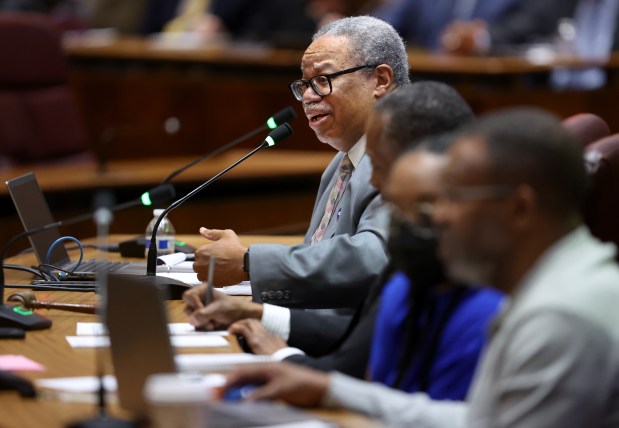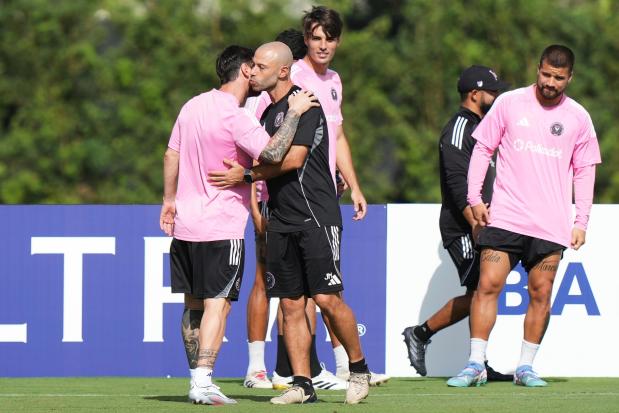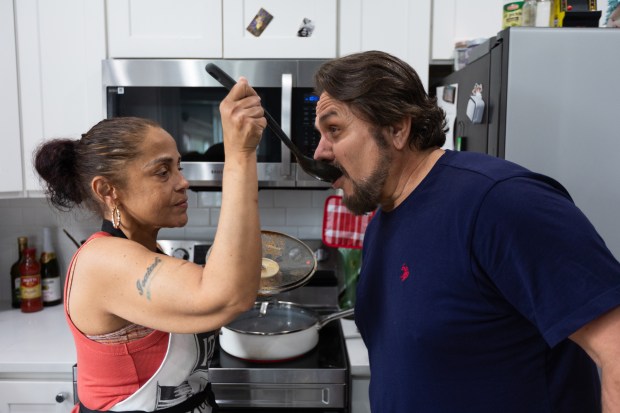The upcoming Democratic National Convention has Paige Weaver bracing for her CTA commute.
She usually heads downtown two or three times a week to her marketing job. But, anticipating crowds on transit during the convention, she plans to shift her workday to arrive at her office early in the morning.
“I feel like the CTA doesn’t tend to rise to the occasion for events as we just saw with Lollapalooza,” she said, referring to her experience waiting for trains around the city while the crowded music festival took place downtown. “So I’m very concerned about how it’ll be able to handle a rush of people into the city.”
The CTA plans to add some additional “L” runs to handle the influx of convention visitors, though the agency provided few specifics about the service. CTA riders will contend with bus reroutes around security perimeters surrounding the convention sites. The agency is also preparing for some equipment to go to DNC use, though CTA President Dorval Carter has promised aldermen the transit agency would be able to run buses and trains during the convention with minimal effects on everyday passengers.
The stakes will be high for the CTA and the embattled Carter as an expected tens of thousands of politicians, dignitaries, protesters and media descend on Chicago for the convention and the city looks to put its best foot forward. After years of complaints about lagging transit service, ridership and concerns about personal safety, both real and perceived, whether the transit agency can run buses and trains frequently and reliably during the convention could serve as a test of its ability to adequately serve both visitors and everyday residents looking to get to work and about their daily lives in the city.
“We all, collectively, view this as an opportunity to show the agency in a very positive light, as well as the city of Chicago,” Carter told aldermen in late July.
As part of their preparations for the convention, the CTA and city officials have celebrated the long-awaited opening of a new Green Line station at Damen as a key accomplishment. Located blocks from the United Center where the convention will take place, the station was initially planned to be finished in 2020 and was completed weeks before the DNC is set to begin.
But riders remain worried about how the CTA will handle service during the event. That included downtown commuters such as Claire Widseth and her boyfriend, who plans to work in Rosemont instead of his typical downtown office during the convention in part to avoid the hassle of crowds on transit and elsewhere around the area, he said.
“The CTA Red Line can barely handle when there’s a Cubs game and a Sox game on the same day,” Widseth said. “So like, I can’t imagine when there’s a national convention going on.”
During the July City Council hearing, Carter said the CTA was prepared for the convention and was ready to handle both everyday service and provide dedicated buses to transport convention participants.
Trains would, for the most part, operate as normal, though there could be some extra runs, he said. He characterized the extra service as “normal activites” the CTA would typically undertake during the summer.
“On the rail side of the house, there’s not a lot of extra service that we’re doing,” he said. “We’re running our regular service. There may be a couple of extra runs that we’ll put in to provide capacity during certain peak hours.”
CTA officials later said in an email the agency planned to adjust service for an expected increase in ridership, as the agency does for other large events. That includes increased capacity during the middle of the day on the Blue and Orange lines, which run to the city’s two airports, and the Green Line, which runs close to both the United Center and McCormick Place, venues where the convention will be taking place.
CTA officials did not respond to questions seeking more details about how much extra capacity would be added and on what days. Carter told aldermen the additional runs could include service to the airports during peak delegate travel times.
The buses for convention use will not affect regular service, Carter told aldermen. The agency plans to provide 165 buses and operators to drive them — a number that has fluctuated in recent months as transportation plans were finalized — which is a fraction of the CTA’s nearly 2,000 buses.
Of those buses, 135 will be used in the afternoons and evenings to take delegates from their hotels to the United Center. Another 30 buses will be used during the day to take delegates to McCormick Place. The DNC will pay CTA $2.4 million for use of the buses.
“Chicagoans should not expect any disruption to their regular service because of what we’re going to be doing,” Carter said.
One of the challenges the CTA has faced in recent years is a shortage of train and bus operators that led to service cuts. The CTA has begun adding back trains to schedules, and officials said in their statement staffing would not be an issue during the convention. The agency is nearly at pre-pandemic levels of bus drivers, though in June the number of train operators was still down 14% from 2019 levels.
“CTA staff have modeled many potential scenarios of what the demand will look like during the week of August 18-24, and we will be prepared to meet the needs of riders, as well as the service being provided for the DNC,” the agency said in a statement. “CTA is confident it can provide the service in support of the DNC while continuing to provide service to daily riders.”
But 40th Ward Ald. Andre Vasquez, a frequent critic of the CTA, said he remains concerned about the transit agency’s use of buses for convention participants and the agency’s ability to provide service during the convention. He acknowledged that hosting a national convention was a challenging proposition for a city, but said it would be crucial for the CTA to focus on providing frequent, reliable buses and trains.
“When there’s already issues about current reliability and making sure people aren’t waiting 15, 25, 45 minutes for buses and trains, there are real concerns,” he said.





